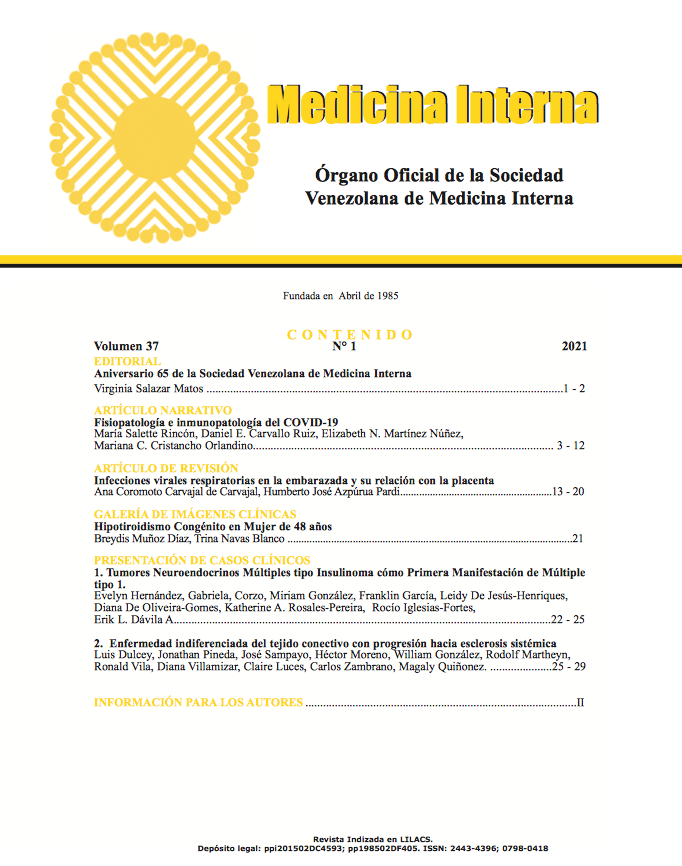Infecciones respiratorias virales y la placenta
Main Article Content
Abstract
Las enfermedades infecciosas que comprometenel aparato respiratorio, generalmente son másgraves en las gestantes y en las puérperas en comparacióncon las no embarazadas. Dentro de estasinfecciones, se encuentran las producidas poragentes virales como la influenza estacional, pandémicay zoonótica, los coronavirus SARS, elMERS; y desde el año 2019 el SARS-CoV-2 causantede la actual pandemia COVID-19. Lasnoxas virales pueden ejercer un efecto deletéreosobre el feto debido a respuesta inflamatoria víacascada de citoquinas o daño directo a nivel dealgunos tejidos. Los efectos del SARS-CoV-2 anivel placentario, no están bien entendidos, loshallazgos histopatológicos incluyen alteracionesde la perfusión venosa materna y fetal y signos deinflamación placentaria en diferentes porcentajes.La placenta es un órgano altamente especializadoque confiere una protección especial generandoun ambiente protegido manteniendo unequilibrio de factores inmunes y bioquímicos quefavorecen el desarrollo fetal. Su estructura funcionacomo una barrera protectora dificultando oimpidiendo el paso de noxas al producto de la gestación.Diversos patógenos, incluyendo los viruspueden alterar los diferentes componentes celularesde la placenta. En la siguiente revisión describimoslos más recientes hallazgos de la interacción con la placenta de diversos virus respiratorios ysus consecuencias en la salud materno fetal.
Infectious diseases of the respiratory systemgenerally present greater severity in women duringpregnancy or puerperium, than in non-pregnantwomen. Among them, we find those produced byviral agents such as seasonal, pandemic and zoonoticinfluenza, SARS coronaviruses, MERS; andsince 2019 the SARS-CoV-2, the cause of thecurrent COVID-19 pandemic. Viral noxae canexert a deleterious effect on the fetus due to aninflammatory response via the cytokines cascadeor direct damage at some tissues. The effects ofSARS-CoV-2 on the placenta is not well understood,the histopathological findings include alterationsof maternal and fetal perfusion and signs ofplacental inflammation in different degrees. Theplacenta is a highly specialized organ that confersa special protection by generating a protectedenvironment maintaining a balance of immune andbiochemical factors that favor the fetal development.Its structure works as a protective barrier,hindering or preventing the passage of noxae to thefetus. Several pathogens, including viruses, canalter different cellular components of the placenta.In the review, we describe the most recent findings of the interaction of various respiratory viruseswith the placenta and their consequences onmaternal and fetal health.
